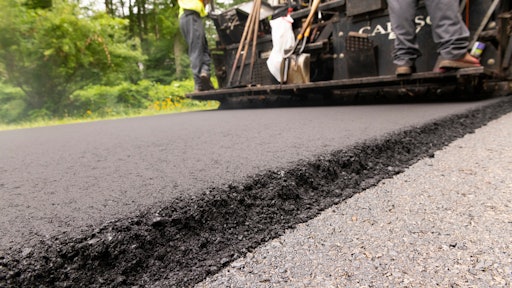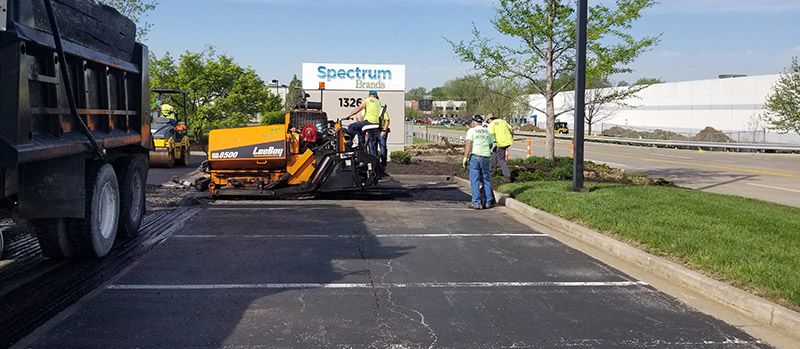The smart Trick of A1 Professional Asphalt & Sealing Llc That Nobody is Talking About
Table of ContentsSome Of A1 Professional Asphalt & Sealing LlcThe A1 Professional Asphalt & Sealing Llc DiariesLittle Known Facts About A1 Professional Asphalt & Sealing Llc.Some Known Details About A1 Professional Asphalt & Sealing Llc A1 Professional Asphalt & Sealing Llc Can Be Fun For Everyone

The oil in a car engine is not simply oil. It includes a range of ingredients to boost the lorry's performance. These include polymers, thickness modifiers, warmth stabilizers, added lubricating substances, and put on ingredients. The REOB has all the ingredients that remained in the waste oil as well as the wear metals from the engine (mostly iron and copper).
By making many blends utilizing various REOB samples and various asphalt binders, the variants mostly can be averaged out. A number of States supplied examples of known REOB composition to TFHRC researchers, who examined the samples to contrast the percent of included (understood) REOB to the found (evaluated) quantity. The evaluations revealed a similar percentage of added and discovered REOB.
The Main Principles Of A1 Professional Asphalt & Sealing Llc
None of those States realized that the asphalt they were acquiring had REOB. One State urged its samples had no REOB - https://www.provenexpert.com/john-tally/?mode=preview.
Of the 1,532 examples examined, 12 percent contained REOB, and some included substantially high degrees of it at 1020 percent. The highest degree was 34 percent in a sample from Texas, which TxDOT had actually made use of in a patching substance. This testing additionally exposed the presence of phosphoric acid in 11 percent of the examples, and 2 percent contained ground tire rubber.
Two years back at TRB's yearly meeting, the Federal scientists held an REOB workshop and offered the searchings for of their laboratory evaluations to a standing room-only crowd. Although some companies do not particularly ban REOB, they do enforce physical examinations that avert its useeffectively a ban. asphalt sealcoating in st louis. Others do not prohibit it by requirements, yet have agreements with asphalt suppliers to avoid the use of REOB
The Main Principles Of A1 Professional Asphalt & Sealing Llc
A handful do enable REOB, some within certain limitations. Ohio and Texas limit levels to much less than 5 percent of the asphalt. To establish a dependable test approach that all States can make use of, the TFHRC researchers established a round-robin test plan. The individuals are 11 State freeway companies (Illinois, Massachusetts, Minnesota, Mississippi, Montana, North Carolina, Oklahoma, South Carolina, Texas, Vermont, and Wyoming), 2 independent testing labs, the Ministry of Transport in Ontario, Queen's University in Ontario, and an Ontario paving contractor.
In total amount, the researchers prepared and delivered 720 blends. The participants are evaluating the examples separately making use of the standards provided by the TFHRC researchers. The round-robin screening is almost finished, and TFHRC remains in the process of collecting the outcomes. The outcome will certainly be a suggested AASHTO examination approach that any State can adopt and utilize (asphalt sealcoating in st louis).
The pavement with REOB, which lies 0.6 mile (1 kilometer) from the pavement without REOB, has identical subgrade, website traffic density, and environment. Nonetheless, the sector of Highway655 with 5 to 10 percent REOB revealed considerable fracturing. In this instance, the presence of REOB was the recognized cause of splitting at a low temperature levels.
"In our experience in copyright, even tiny quantities of 23 percent can be a trouble." Similarly, a section of test sidewalk in Minnesota (MN1-4) discovered to include REOB additionally broke too soon. The sidewalk performed well for the first 3 to 4 years, however after that began to split. This pavement is also subject to reduced temperature levels.
An Unbiased View of A1 Professional Asphalt & Sealing Llc
The tests were not substantial, however they revealed that at degrees of 6 percent or more, the tensile stamina of the asphalt went down dramatically. At a level of 3.5 percent REOB, the variation in the physical test techniques was above the impact of REOB. Actually, it was tough for researchers to examine whether REOB existed.

One binder specification considered is the distinction between the reduced temperature vital specification temperature level for tightness (S) in the flexing beam rheometer these details and the flexing beam of light rheometer creep slope (m-value) kept in mind as Tcritical. Two independent research groups, one from AASHTO and the other from the Asphalt Institute, concluded that even more research is required on the use of REOB in asphalt.
Formerly, all asphalt testing measured engineering properties such as tightness. These tests do not show what materials had actually been added to the asphalt. One sample obtained during the TFHRC research study had a really unusual analysis. The sample had the adhering to examination results: Superpave PG 64-28 with a high temperature level quality of 67.3 Tcritical on the bending light beam rheometer was 6.7 degrees Celsius.

Examine This Report about A1 Professional Asphalt & Sealing Llc
These outcomes show there are weaknesses in the standardized design testing methods that might be exploited. The producer may have a financial advantage and the item passes all the standard tests, but the product may not be useful to making sure long-lasting efficiency. To resolve this problem and the development of brand-new asphalt additives and extenders, TFHRC is beginning a research study program to use portable spectroscopic devices, x-ray fluorescence spectroscopy, and Fourier change infrared spectroscopy to make it possible for analyses to be carried out in the area instead of needing to take samples back to the laboratory.